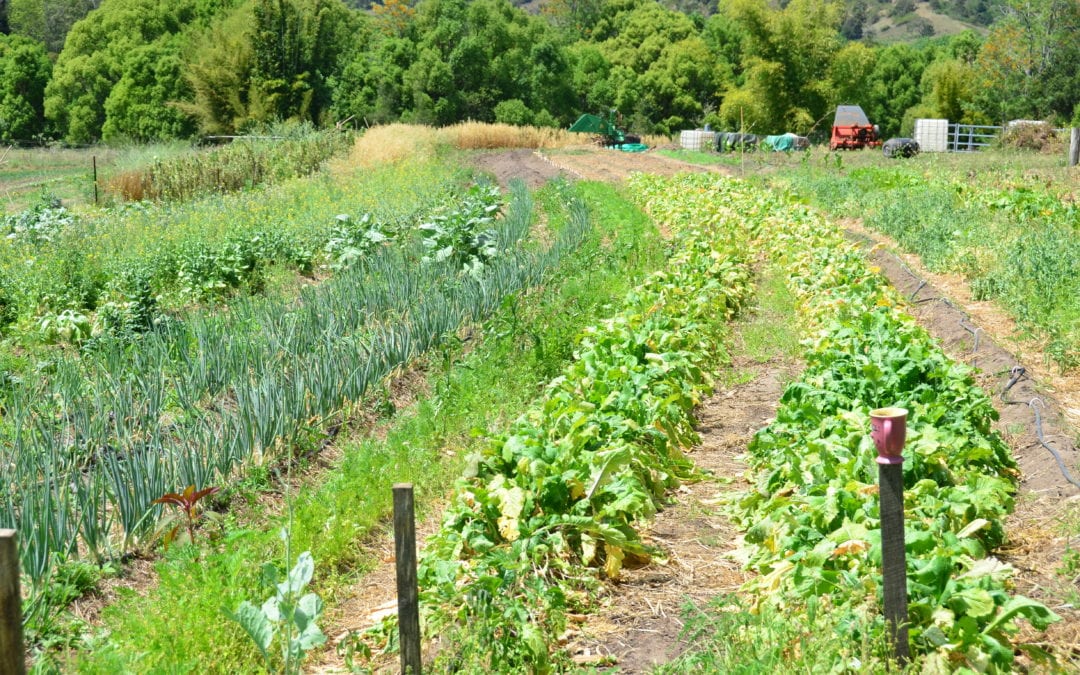I’ve said before that soil is the foundation of everything and I’m going to say it again. Soil is the foundation of everything, it’s where everything starts and where everything ends up, even us. Soil is the ultimate product of a good design and the creation of new soil is the best metric we have to benchmark the prowess of a permaculture designer.
The soil food web is a delicately complex interconnected system beneath our feet. A single teaspoon of good soil contains upwards of one billion bacteria, one million fungi, tens of thousands of amoebas and so many other things we can’t even comprehend. Feeding the soil well translates to a healthy soil food web which feeds whatever you might be growing in that soil which will ultimately feed you and your family. Pests show up when there’s plants that are decaying or dying, usually as a result of a poor soil food web – this is their function in nature. They stay away from healthy plants because these plants tend to be highly nutrient dense foods and the pests are unable to digest them. As such, it’s pretty obvious that an unhealthy soil food web would seriously undermine the ability to produce good quality food for ourselves.
Of the nineteen ‘rules of the soil food web’ we learned there were two that I felt were especially poignant-
1. Applications of synthetic fertilizer kill off most or all of the soil food web microbes
2. Rototilling and excessive soil disturbance destroy or severely damage the soil food web.
These two rules are essentially what industrial agriculture is all about. There are mass applications of synthetic fertilizers and all kinds of other chemicals supposing to be pesticides over vast swaths of land that are tilled and ripped up every single year, sometimes multiple times a year. This is a mass genocide of the entire soil food web, every single year. Industrial agriculture does the exact opposite thing that the earth actually needs to thrive and produce beneficial yields for humanity. This has got to be one of the definitions of insanity. How could this possibly make any sense for humanity?
On the bright side, we can make this better in a big way, right now. Permaculture is a toolkit for producing new soil. It all starts with compost. There’s a multitude of different composting recipes, techniques and applications – you just have to find what’s right for you. There’s composts which are fungi dominant and others that are bacteria dominant. The key consideration in composting is achieving a 25:1 Carbon: Nitrogen ratio in your ingredients.
One method of producing compost is building a compost heap. In order for this to work and heat up enough, you’ve got to be working with a pile that is at minimum 1.5 cubic meters of stuff. The basic formula is that you want to have 3 parts brown materials, 2 parts green materials and 1 part manure. The brown materials are a carbon source and could be things like dried leaves, saw dust, small wood chips, straw, etc. Green materials are a nitrogen source and include things like fresh grass clippings and vegetable scraps. Manure is also a nitrogen source and can come from cows, horses, goats and chickens (you want to make sure these animals are grass-fed, not grain fed). In order to build a pile, you start with a bedding of brown materials and just keep layering up- remember brown, green poo. You can cap the pile off with a nice mix of all the materials. You want to make sure the pile has adequate moisture, like that of a wrung out sponge.
Once the pile is made there’s a number of different perspectives on turning and schedules for this. In the context of permaculture, our aim is to produce a soil inoculate that is full of life and activity with the goal of feeding and nurturing the soil food web. The Berkeley method of composting recommends you make the first turn on the fourth day and then turn the pile every two days until you reach day 18. On day 18, you should have rich and yummy earth for your garden. The purpose in turning the pile is that the party is really happening in the middle and everyone wants to get in on it, so by turning you give all the microbes a chance to have some fun in the mix. Composting gets hot, you should be aiming for an ideal temperature of 55-60 degrees Celsius, which is hot enough to bake a potato.
You can even extend the reach of the compost even further by making compost tea out of it and sprinkling it onto the leaves of your plants and their soil. There’s a guy in Alaska who makes a killer mix of compost tea, aptly named bountea and he’s grown vegetables so big he’s broken multiple world records.
The moral of the story is that everything comes back to soil. Soil is the crux of this whole cycle we call life. It all starts in the soil and were all going to end up there eventually. Hopefully along the way we can live a life that creates beautiful soil for the earth.

